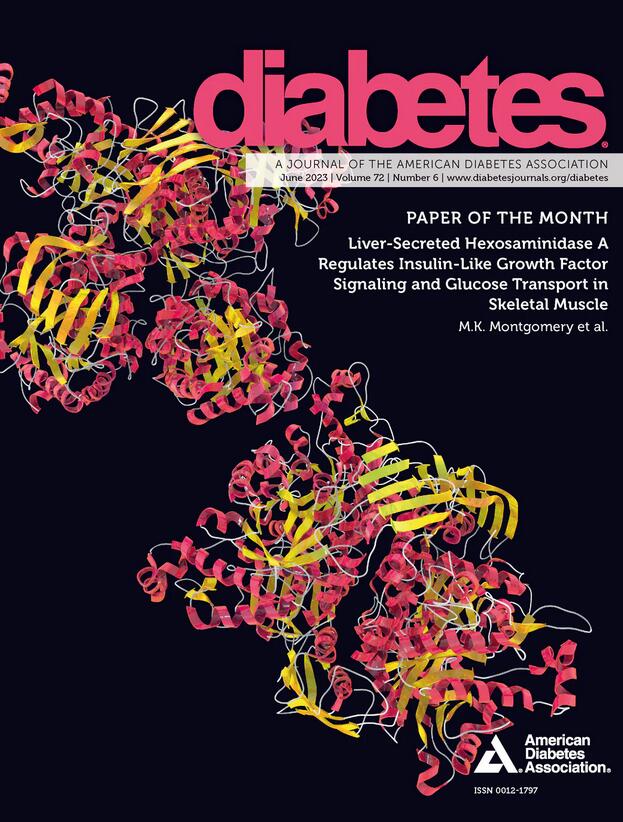2058-LB: Identification of Earlier Stage Autoimmune Type 1 Diabetes Using Machine Learning Algorithms
IF 7.5
1区 医学
Q1 ENDOCRINOLOGY & METABOLISM
引用次数: 0
Abstract
Introduction and Objective: Autoimmune type 1 diabetes (T1D) often goes undiagnosed until a major clinical event triggers disease recognition. Identifying individuals in early T1D stages remains a clinical challenge given inefficient screening thus limiting opportunities for early intervention. This study aimed to develop a predictive machine learning model that identified individuals before the onset of stage 3 T1D. Methods: This was a retrospective cohort study that utilized medical claims data and lab test results from the US Managed Markets Insight & Technology (MMIT) dataset to develop two age specific AI/ML Models (0-24 years and 25+ years) for identifying individuals with presumed early stage T1D at least one year from first observed T1D diagnosis. Confirmed stage 3 T1D cases, used to train and validate the model, were required to have ≥2 claims for T1D, a ratio of T1D : type 2 diabetes claims of ≥0.5, ≥1 claim for insulin or continuous glucose monitoring, and claims activity of at least 1 medical and 1 pharmacy claim in each year for two years before first observed T1D diagnosis or treatment (index). The model was trained on patient data >12 months prior to index to identify patients at least one year before the appearance of a T1D diagnosis or treatment. Variables included T1D and non-T1D associated clinical variables, autoimmune markers, comorbidities, demographic factors, and sequential medical events. Results: Both models were able to detect diagnosed T1D patients (~80% sensitivity in the 0-24 model; ~92% in the 25+model) at ~8% precision in the 0-24 model (~14k true positives in ~167k predicted positives) and ~10% in the 25+ model (~16k in ~169k). Conclusion: The study demonstrates the potential clinical utility of machine learning models for the early detection of type 1 diabetes. This may enable earlier diagnosis through increased screening efficiency and yield, allowing for timely intervention and better management of T1D, ultimately improving patient outcomes. Disclosure F. Lam: Consultant; Sanofi. V. Tiwari: Consultant; Sanofi. G. Mion: Consultant; Sanofi. D. Khedekar: Consultant; Sanofi. P. Mukherjee: Consultant; Sanofi. S. Pandey: Consultant; Sanofi. D. Desai: Consultant; Sanofi. L. Wilson: Employee; Sanofi-Aventis U.S. Stock/Shareholder; Sanofi-Aventis U.S. J. Dunne: Employee; Sanofi, Novo Nordisk. L. Hao: Employee; Sanofi. M. Wieloch: Employee; Sanofi. Stock/Shareholder; Sanofi. J.H. Zaccai: Employee; Sanofi. R.B. McQueen: Speaker's Bureau; Sanofi. Other Relationship; Sanofi. K.M. Simmons: Consultant; Sanofi. Research Support; Sanofi. Advisory Panel; Sanofi, Shoreline Biosciences. E.K. Sims: Consultant; Sanofi. Speaker's Bureau; Med Learning Group. Other Relationship; American Diabetes Association. Funding This study was funded by Sanofi.2058-LB:使用机器学习算法识别早期自身免疫性1型糖尿病
自身免疫性1型糖尿病(T1D)通常在重大临床事件触发疾病识别之前无法诊断。由于筛查效率低下,因此限制了早期干预的机会,识别早期T1D阶段的个体仍然是一项临床挑战。本研究旨在开发一种预测机器学习模型,在第三阶段T1D发病前识别个体。方法:这是一项回顾性队列研究,利用了来自美国Managed Markets Insight &;技术(MMIT)数据集开发两个特定年龄的AI/ML模型(0-24岁和25岁以上),用于识别从首次观察到的T1D诊断至少一年起推定为早期T1D的个体。用于训练和验证模型的确诊3期T1D病例,要求T1D索赔≥2项,T1D与2型糖尿病索赔之比≥0.5,胰岛素或连续血糖监测索赔≥1项,并且在首次观察到T1D诊断或治疗(指数)之前的两年内,每年至少有1项医疗索赔和1项药房索赔活动。该模型在索引前12个月根据患者数据进行训练,以便在T1D诊断或治疗出现前至少一年识别患者。变量包括T1D和非T1D相关临床变量、自身免疫标志物、合并症、人口统计学因素和连续医疗事件。结果:两种模型均能检测出确诊的T1D患者(0-24岁模型灵敏度~80%;在0-24模型中精度为~8%(在~167k预测阳性中~14k真阳性),在25+模型中精度为~10%(在~169k中~16k)。结论:该研究证明了机器学习模型在1型糖尿病早期检测中的潜在临床应用价值。这可能通过提高筛查效率和产量来实现早期诊断,允许及时干预和更好地管理T1D,最终改善患者的预后。F. Lam:顾问;赛诺菲。V. Tiwari:顾问;赛诺菲。G. Mion:顾问;赛诺菲。D. Khedekar:顾问;赛诺菲。P. Mukherjee:顾问;赛诺菲。S. Pandey:顾问;赛诺菲。D.德赛:顾问;赛诺菲。L.威尔逊:雇员;赛诺菲-安万特美国股票/股东;赛诺菲-安万特美国公司:员工;赛诺菲,诺和诺德。L.郝:员工;赛诺菲。M. wiloch:雇员;赛诺菲。股票/股东;赛诺菲。J.H.扎凯:雇员;赛诺菲。R.B.麦昆:发言人办公室;赛诺菲。其他关系;赛诺菲。K.M. Simmons:顾问;赛诺菲。研究支持;赛诺菲。顾问小组;赛诺菲,海岸线生物科学公司。E.K. Sims:顾问;赛诺菲。演讲者的局;医学学习小组。其他关系;美国糖尿病协会。本研究由赛诺菲资助。
本文章由计算机程序翻译,如有差异,请以英文原文为准。
求助全文
约1分钟内获得全文
求助全文
来源期刊

Diabetes
医学-内分泌学与代谢
CiteScore
12.50
自引率
2.60%
发文量
1968
审稿时长
1 months
期刊介绍:
Diabetes is a scientific journal that publishes original research exploring the physiological and pathophysiological aspects of diabetes mellitus. We encourage submissions of manuscripts pertaining to laboratory, animal, or human research, covering a wide range of topics. Our primary focus is on investigative reports investigating various aspects such as the development and progression of diabetes, along with its associated complications. We also welcome studies delving into normal and pathological pancreatic islet function and intermediary metabolism, as well as exploring the mechanisms of drug and hormone action from a pharmacological perspective. Additionally, we encourage submissions that delve into the biochemical and molecular aspects of both normal and abnormal biological processes.
However, it is important to note that we do not publish studies relating to diabetes education or the application of accepted therapeutic and diagnostic approaches to patients with diabetes mellitus. Our aim is to provide a platform for research that contributes to advancing our understanding of the underlying mechanisms and processes of diabetes.
 求助内容:
求助内容: 应助结果提醒方式:
应助结果提醒方式:


